Cats, much like humans, can get bored, and when they do, they often resort to mischief. While there are countless plastic toys on the market designed to keep your feline friend entertained, these often end up in a landfill sooner than you’d like. Rather than contributing to the growing pile of plastic waste, consider more sustainable ways to engage your cat. Here are 14 effective methods that not only stimulate your cat’s mind and body but also resonate with eco-friendly living.
1. Create Cardboard Box Adventures

Cardboard boxes have a strange allure for cats, transforming them into cozy hideaways or imaginary fortresses. Simply leaving a box open on the floor can provide hours of entertainment as your cat jumps in and out, pounces, and claws at its edges. You can enhance this experience by cutting holes in the sides to create a little maze or tunnel. Cats love the texture and the sense of security that small, enclosed spaces provide.
According to a study published in the journal *Applied Animal Behaviour Science*, cats often find comfort in enclosed spaces like boxes because they provide a safe retreat. This instinctual behavior is linked to stress reduction and overall well-being. So, not only are boxes a free alternative to plastic toys, they might also make for a happier, more relaxed pet. With the added bonus of recycling, you’re winning on all fronts.
2. Try Some Feather and String Magic
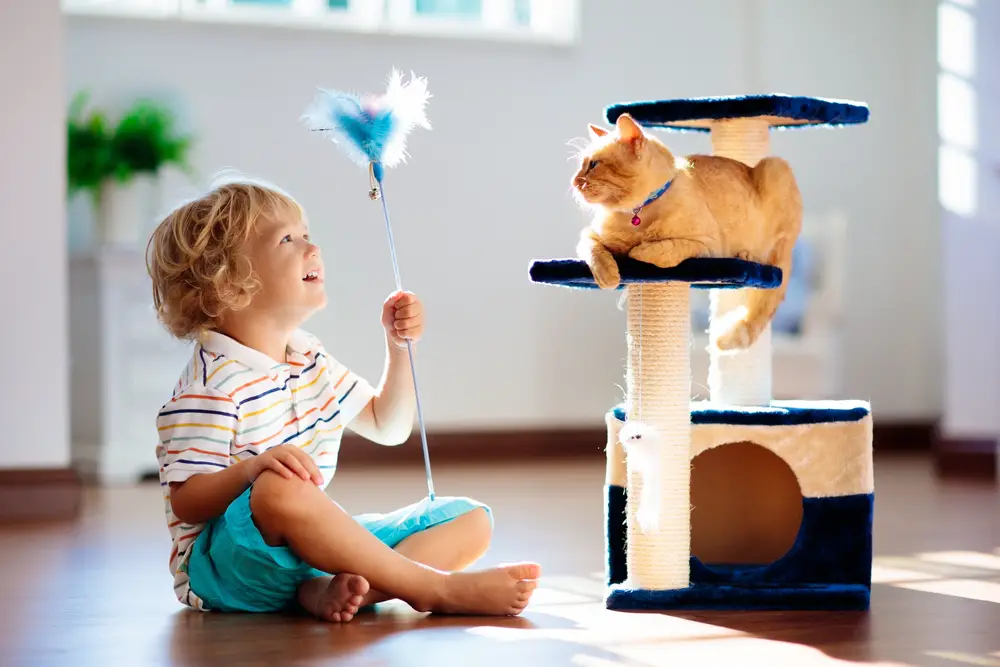
A simple piece of string or yarn tied to a feather or small fabric scrap can become the ultimate cat toy. Dragging it across the floor or waving it through the air taps into your cat’s predatory instincts, encouraging them to pounce and chase. This activity can be a delightful bonding experience between you and your cat, giving you both some interactive playtime. Just remember to store the string safely away after playtime to avoid any potential swallowing hazards.
Playing with a string toy also provides excellent exercise for your feline, keeping them agile and fit. It’s a wonderful way to promote physical activity, preventing obesity-related health issues. Plus, the unpredictability of a human-controlled toy offers more stimulation than electronic alternatives. Keeping things fresh and spontaneous is key to maintaining your cat’s interest.
3. Make a DIY Tissue Paper Playground

Gather some leftover tissue paper from gift bags and set up a crinkly playground for your cat. The sound and texture of tissue paper are intriguing to cats, and they’ll love pouncing and rustling around. You can lay sheets on the floor or scrunch them up into loose balls for batting practice. Tissue paper is lightweight and encourages cats to engage in playful antics.
Research from the International Journal of Animal Studies suggests that sensory enrichment, like the sound and texture of tissue paper, is vital to a cat’s mental health. It can reduce feelings of boredom and anxiety, especially in indoor cats who may not have the same stimuli as their outdoor counterparts. By using leftover materials, you not only entertain your cat but also practice resourcefulness. It’s a small yet effective way to contribute to a zero-waste lifestyle.
4. Get Creative With Sock Balls

Lonely socks from the laundry have found their new purpose as a cat toy. Roll them up into tight balls for your cat to chase and bat around the house. The heft of a sock adds a different dimension to play, encouraging your cat to use more strength and precision. You can even sprinkle some catnip inside before rolling for an extra layer of allure.
This activity promotes healthy exercise habits by encouraging vigorous play. Physical stimulation from chasing and batting a sock ball can help improve your cat’s coordination and balance. Plus, it’s a great way to repurpose socks that have lost their partners. It’s a win for your cat’s health and an eco-friendly solution to waste.
5. Create a Catnip Garden

If you’re looking to spoil your cat without a trip to the pet store, consider growing a small patch of catnip. This plant is like an irresistible potion for felines, inducing a state of euphoria that leads to joyful romps and playful antics. You can plant catnip in a pot by a sunny window, providing a constant source of entertainment and relaxation for your kitty. The joy of watching your cat interact with something natural and organic is rewarding for both of you.
According to veterinarians at the ASPCA, catnip has a mild psychoactive effect on cats, leading to temporary behavioral changes. While it’s safe and non-addictive, the response can vary from cat to cat. Cultivating your own catnip garden is not only cost-effective but also allows you to control the quality and freshness of the plant. It’s a delightful way to incorporate a bit of nature into your indoor space.
6. Make a Puzzle Feeder

Transform mealtime into playtime by creating a DIY puzzle feeder out of household items. An egg carton or a muffin tin filled with kibble challenges your cat to fish out their food, stimulating their problem-solving skills. This kind of enrichment is especially beneficial for indoor cats, who need mental exercise to stave off boredom. Plus, it’s a great way to slow down fast eaters, promoting better digestion.
Puzzle feeders engage your cat’s natural hunting instincts, making them work for their food in a fun and engaging way. By encouraging mental activity, you help keep your cat sharp and cognitively active. This kind of challenge can also help alleviate stress and anxiety in cats, making for a happier household. And the best part? No new purchase required.
7. Play Paper Bag Hide-and-Seek
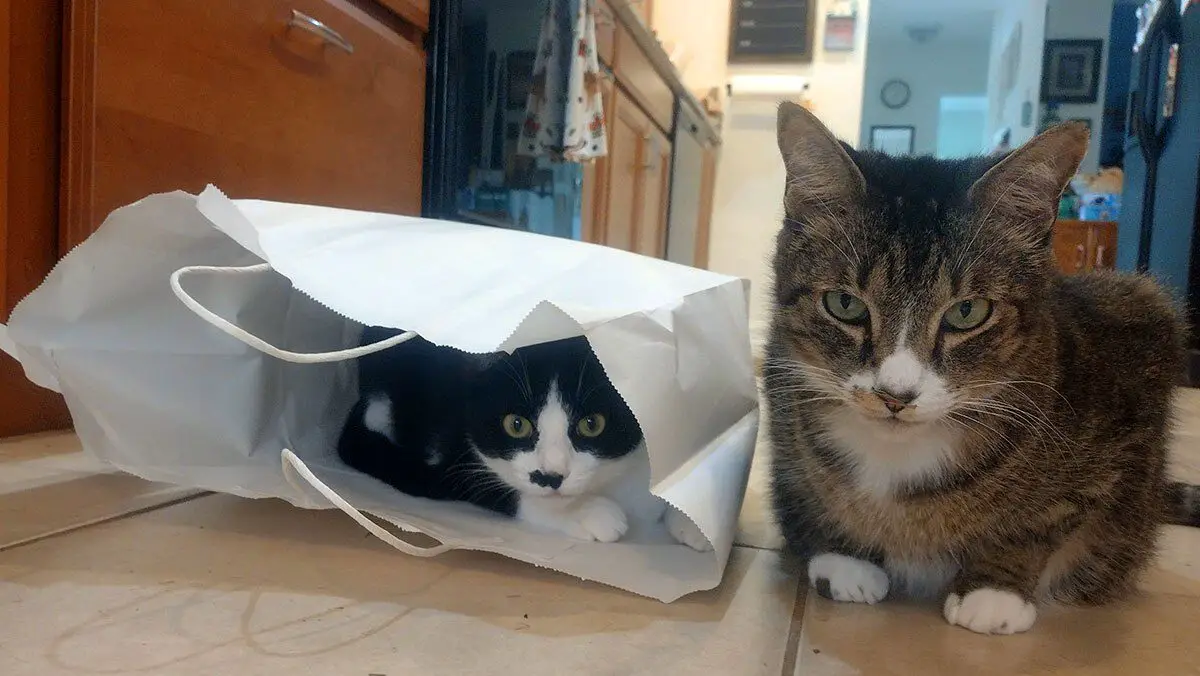
Next time you return from the grocery store, save a couple of paper bags for your cat. Their love for hiding and sneaking around makes paper bags the perfect playground. Simply leave one open on the floor and watch as your cat investigates, pounces, and hides. The crinkle of the paper adds an auditory element that’s irresistible.
The fascination with bags is rooted in a cat’s instinctual behavior, as highlighted by animal behaviorists in the *Journal of Feline Medicine and Surgery*. Enclosed spaces offer a sense of security, while the crinkling sound mimics the noise of prey moving through leaves or grass. This encourages exploratory behavior and can even help reduce anxiety. A paper bag is not only an eco-friendly alternative to synthetic toys, but it’s also endlessly entertaining for your cat.
8. Go on a Scavenger Hunt

Turn your home into a treasure hunt zone by hiding treats around different corners and crevices. This encourages your cat to explore different areas of your home, promoting both physical activity and mental stimulation. Start with easy-to-find spots and gradually increase the difficulty, making it a game that evolves over time. Your cat will love the challenge, and you’ll enjoy watching them solve problems.
This activity provides an excellent opportunity to strengthen the bond between you and your cat. As they learn to associate you with positive stimuli, such as treats, your relationship deepens. Scavenger hunts also encourage cats to use their senses in new ways, keeping their minds sharp. It’s a simple yet effective way to engage your cat’s curiosity and innate hunting instincts.
9. Set Up a Window Watching Paradise
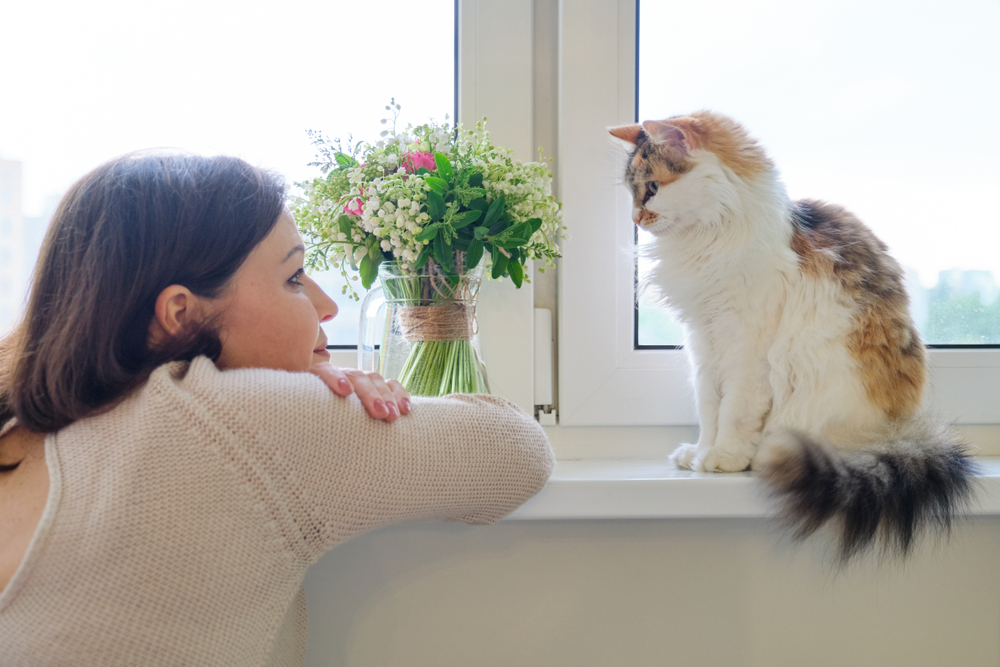
Set up a perch by a window where your cat can watch the world go by. The sights and sounds outside can be endlessly fascinating, turning hours into minutes for a curious cat. Birds, squirrels, and passing people provide entertainment, while the sun offers a warm spot for napping. A simple cushion or blanket on a windowsill can make all the difference.
Creating a window-watching nook taps into your cat’s natural curiosity and desire for exploration. It’s a passive form of entertainment that requires little effort on your part but provides significant enrichment for your cat. Over time, this viewing spot can become their favorite hangout, offering both relaxation and stimulation. It’s an easy and cost-effective way to keep your indoor cat engaged with the outside world.
10. Make Use of Old Clothes
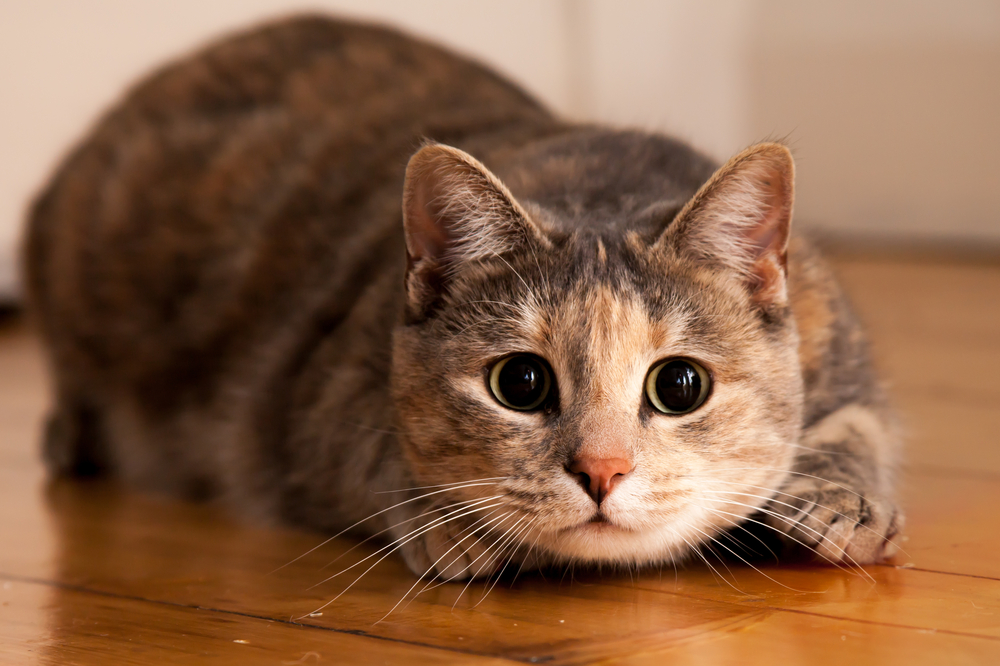
Gather old T-shirts or scarves and create a soft, tangled web for your cat to explore. Cats love to dig through piles of soft material, and the different textures will keep them entertained. You can tie shirts together to create a longer, more complex playground, or simply pile them up for your cat to nest in. Incorporating a few of your worn items adds a comforting scent that can be soothing for your pet.
This method not only provides entertainment, but it also helps strengthen the bond between you and your cat. Familiar smells can be reassuring, especially for cats who may feel anxious or stressed. By reusing old clothes, you’re also embracing a sustainable lifestyle and reducing waste. It’s a creative way to upcycle while providing comfort and joy to your furry friend.
11. Try Water Fun with Ice Cubes
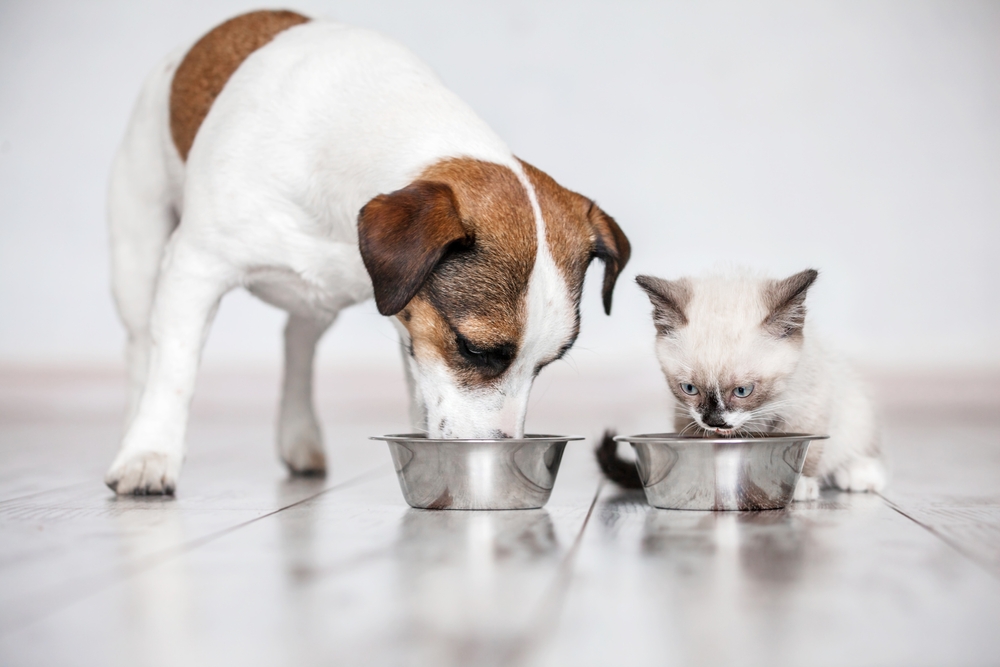
Fill a shallow dish with a little water and add a few ice cubes for your cat to bat at. The movement of the ice and the splash of the water create an engaging game that challenges your cat’s dexterity and curiosity. It’s a simple yet refreshing activity, especially during warmer months. Plus, it’s an opportunity for your cat to stay hydrated in a fun way.
This activity can be a new sensory experience for cats who are typically cautious around water. It introduces them to a different texture and temperature, expanding their range of experiences. You can even freeze a small treat inside the ice cube for an added surprise. It’s a low-cost, low-waste way to keep your cat entertained and active.
12. Create a Cat TV

If your cat loves watching the world outside, consider setting up a bird feeder near a window for live-action entertainment. The flutter of birds will captivate your cat’s attention, providing hours of visual stimulation. Make sure to securely attach the feeder to avoid any accidents. This natural entertainment is both stimulating and relaxing for your feline friend.
Bird-watching can be a highly engaging activity for cats, activating their natural hunting instincts. According to experts from the Cornell Lab of Ornithology, providing opportunities for safe wildlife observation can enrich a pet’s life significantly. You’ll delight in watching your cat’s fascination and, at the same time, contribute to local wildlife feeding. It’s a naturally enriching experience that benefits your cat and the environment.
13. Craft a DIY Treat Dispenser

With a few cardboard rolls and tape, you can fashion a homemade treat dispenser that challenges your cat to think and move. Seal one end of a cardboard tube, fill it with treats, and create a few holes for your cat to fish them out. As they roll and manipulate the tube, they work for their reward, keeping them mentally and physically engaged. It’s a simple yet effective way to turn snack time into playtime.
This DIY project stimulates your cat’s problem-solving abilities and can help manage their weight by promoting slower eating. Engaging your cat’s mind and body simultaneously helps tire them out, leading to better rest and relaxation. By using materials you already have, you’re also cutting down on waste and avoiding unnecessary purchases. It’s a fun, sustainable way to treat your cat.
14. Give Shadow Play with Flashlights a Go

A flashlight or laser pointer can create an exhilarating game of chase for your cat. The unpredictable movements of a light beam mimic the erratic flight of insects, captivating your cat’s attention. It’s an excellent way to encourage exercise, helping to maintain a healthy weight and muscle tone. But remember, it’s essential to end the game with a tangible toy or treat to prevent frustration.
Interactive play such as this engages your cat’s natural predatory instincts in a safe and controlled manner. However, moderation is key; prolonged frustration without a reward can lead to stress. Ending every play session with a reward reinforces positive behavior and keeps the game enjoyable. It’s an easy, cost-free way to keep your cat active and happy.
